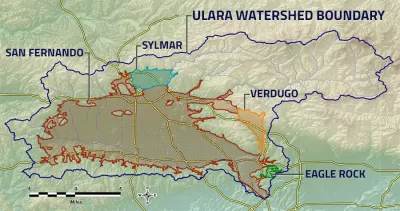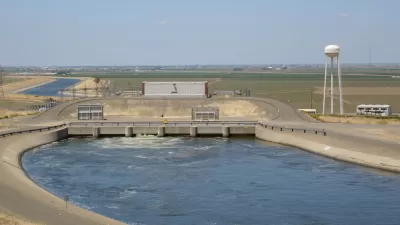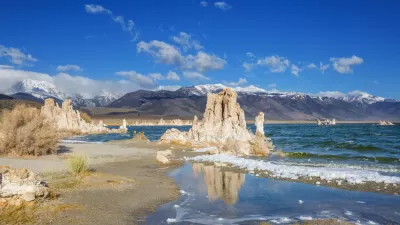The semi-arid region of Los Angeles is often mistaken for a desert, but the local water supply is also constrained by the environmental sins of the 20th century. The water supply equation of Los Angeles will soon change, however.

Hayley Smith reports for the Los Angeles Times on a major breakthrough for resilience in the nation’s second largest city: the city of Los Angeles is nearing completion on a $600 million project to restore groundwater supplies in the San Fernando Valley.
“Nearly 70% of the city’s 115 wells in the San Fernando Valley groundwater basin — the largest such basin under the purview of the Los Angeles Department of Water and Power — have been sitting unused for decades after dangerous contaminants seeped into the aquifer,” explains Smith.
The toxic plume in the city’s groundwater supply is a result of pollution from the aerospace, automobile, and defense industries of the region’s boom period in the 20th century. “The extent of the problem wasn’t fully uncovered until after the Safe Drinking Water Act of 1974 mandated increased testing and monitoring standards for drinking water,” according to the article.
The project will enable three treatment facilities to filter contaminants from the toxic plume out of the groundwater basin. Angelenos will “regain full access to up to 87,000 acre-feet of water each year, or nearly a fifth of what they consume.”
The new water supply couldn’t come at a better time, as the state and the region attempt to address the latest of a string of droughts—a trend only likely to worsen as a result of climate change. The long-term work of retrofitting the valley with permeable surfaces is not mentioned in the article.
FULL STORY: Drought-ravaged L.A. seeks surprising source of water: A contaminated Superfund site

Trump Administration Could Effectively End Housing Voucher Program
Federal officials are eyeing major cuts to the Section 8 program that helps millions of low-income households pay rent.

Planetizen Federal Action Tracker
A weekly monitor of how Trump’s orders and actions are impacting planners and planning in America.

Ken Jennings Launches Transit Web Series
The Jeopardy champ wants you to ride public transit.

Opinion: Transit Agencies Must View Service Cuts as Last Resort
Reducing service could cripple transit systems by pushing more riders to consider car ownership, making future recovery even less certain.

‘Smart Surfaces’ Policy Guide Offers Advice for Building and Maintaining Urban Tree Canopies
Healthy, robust tree canopies can reduce the impacts of extreme heat and improve air quality.

New Jersey Lawsuit Targets Rent-Setting Algorithms
The state of New Jersey is taking legal action against landlords and companies that engage in what the state’s Attorney General alleges is illegal rent fixing.
Urban Design for Planners 1: Software Tools
This six-course series explores essential urban design concepts using open source software and equips planners with the tools they need to participate fully in the urban design process.
Planning for Universal Design
Learn the tools for implementing Universal Design in planning regulations.
Heyer Gruel & Associates PA
Ada County Highway District
Institute for Housing and Urban Development Studies (IHS)
City of Grandview
Harvard GSD Executive Education
Toledo-Lucas County Plan Commissions
Salt Lake City
NYU Wagner Graduate School of Public Service





























